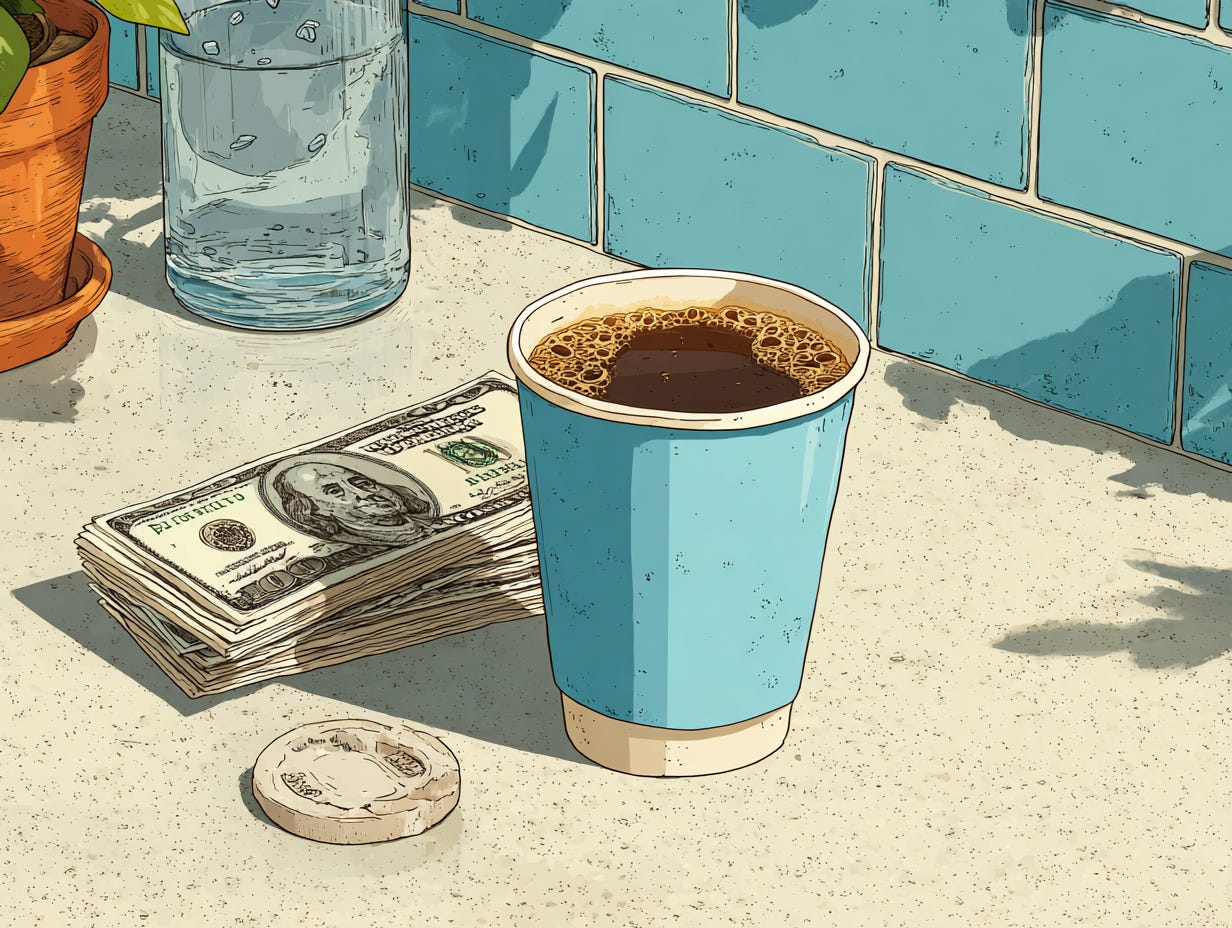Coffee Is Not Wine
How the pursuit of traditional luxury is making coffee companies miss the real opportunity
After my last post about the $30,000-a-kilo auction, I’ve been thinking about what luxury actually means in coffee, and why so many of us keep getting it wrong.
I see people in our industry who seem to desire a future where coffee works like the wine industry, relying on artificial scarcity and taste-makers to bring prices to astronomical figures.
But the fundamentals of what create a luxury product are not there. You can't age coffee. You can't build collections. You can't trade it like vintage bottles. But they want it anyway, chasing something coffee simply cannot be.
Green coffee starts dying after twelve months, no matter how you store it. Roasted coffee peaks in the span of days and weeks. Brew it wrong and even the most expensive beans will taste like disappointment. Coffee's value will always live in the moment of consumption, not in the promise of tomorrow.
But this isn't a limitation to overcome. It's the constraint that defines the entire game.
Building around ephemeral luxury
So they build toward two extremes: an impossible luxury tier at the top, and commodity pricing at the bottom. They're ignoring the middle—where the endless opportunity lives.
The retail landscape shows this same split everywhere. Cheap commodities on one side. On the other, what I call "daily luxury"—products expensive enough to notice, good enough to justify.
I see this in consumables I buy regularly. The $12 chocolate bar that dissolves into layers of flavor. The olive oil that costs twice as much but transforms a cucumber tomato salid. An artisan soap that makes showers feel deliberate .
These aren't collectibles. They're consumable luxuries—things you use up completely, but the experience justifies the premium. They win by making ordinary moments feel extraordinary.
Coffee has always operated in this space, even when we didn't have words for it.
Ottoman coffeehouses served everyone the same cup—laborers next to intellectuals. Parisian cafés didn't segregate by class when serving coffee. Yemeni ports saw merchants and sailors sharing the same brew.
An old Arabic book on coffee captures it: "Coffee is the common man's gold, and like gold, it brings to every person the feeling of luxury and nobility."
I believe some lots deserve premium pricing, but trying to transform coffee from accessible luxury into status symbol will only lead to disappointment.
The real opportunity is the $12 pourover. Or even the $30 one.
A $30 cup of coffee is objectively expensive. But when it's positioned as the premium experience on a menu, when it's sourced ethically, roasted skillfully, and brewed with care, that price becomes reasonable.
Not because it's rare, but because it's complete.
You're not buying a collectible or a status marker. You're buying a complete sensory experience that costs less than most restaurant entrees and delivers something genuinely precious in real time. This is precisely where coffee can live comfortably as a consumable luxury good.
Why traditional luxury models fail coffee
I've watched people try to force coffee into luxury frameworks built for whisky or wine. It never sticks.
Those products improve with time. Coffee deteriorates. They reward patience. Coffee demands urgency. They can survive poor handling. Coffee gets destroyed by it.
Even the finest beans become mediocre coffee when roasted poorly or extracted badly. Scarcity means nothing if execution fails.
This isn't coffee's weakness—it's what makes it interesting to build around.
What I'm building toward
When I think about coffee worth paying premium prices for, I focus on three things:
Experience design. Every touchpoint matters. The grinding sound, the pour technique, the cup weight, the service style. These aren't details, but the product itself.
Performance delivery. The coffee has to work. Clean flavors, balanced extraction, consistent results. This means controlling every variable from farm to cup, respecting each person in the chain who adds value.
Aesthetic intention. Everything visible should reinforce quality. Packaging, presentation, environment—all of it should feel deliberate, worthy of what's inside.
When these align, you don't need artificial scarcity or collectible mystique. You have something more valuable: a repeatable luxury experience that anyone can access but few will execute well.
This is where I'm placing my own work. Not in sourcing/creating coffee for collectors, but elevating coffee for daily luxury—something that transforms routine into ritual, ordinary moments into small celebrations.
The goal isn't to source rare, desirable coffee to sell for more than they are conceivably worth. It's to make coffee that delivers its full value the moment it's consumed.
This is where I plant my flag: the companies who figure out how to charge $20/cup for consistently exceptional coffee experiences will own the most profitable part of the coffee market while everyone else chases impossible dreams.




Awesome writing!
Good read bro. I'm curious about the title in Arabic.